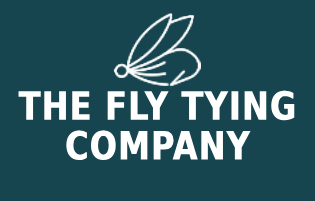Origin and History
The Hare’s Ear Nymph is one of the most enduring and versatile nymph patterns in fly fishing. Originating in the 19th century, it was designed to imitate a wide range of aquatic nymphs and larvae, particularly mayflies and caddis larvae. Its natural tones and mottled body make it highly effective in both rivers and stillwaters, and it remains a favourite for UK trout anglers due to its simplicity and reliability.
Materials
- Hook: Nymph or wet fly hook, sizes 12–18
- Thread: Brown, olive, or black 8/0
- Body: Natural hare’s ear dubbing
- Rib: Fine gold or copper wire (optional)
- Hackle: Soft brown or grizzly hen hackle for thorax
- Optional Wing Case: Turkey quill or CDC fibres
Popular Variations
- Beadhead Hare’s Ear Nymph – adds weight and sparkle for deeper water
- Soft hackle thorax Hare’s Ear – creates lifelike movement in slow water
- Olive-dubbed body Hare’s Ear – mimics local mayfly nymphs
- Peacock herl thorax for flash and attractor effect
- Emerging Hare’s Ear Nymph – CDC wing fibres to imitate emergers
Step-by-Step Tying Guide
- Secure the hook in the vice and start your thread behind the eye, winding down to the hook bend.
- Optionally tie in fine wire at the bend for ribbing later.
- Apply hare’s ear dubbing to the thread and build a tapered nymph body along the hook shank.
- Counter-wrap the wire rib over the body in evenly spaced turns and secure near the thorax.
- Tie in a soft hackle at the thorax and wrap 1–2 turns for legs.
- Optional: Tie a wing case of turkey quill or CDC fibres over the thorax.
- Form a neat thread head, whip finish, and apply a small drop of varnish if desired.
Seasonality & Representation
The Hare’s Ear Nymph is effective year-round but especially from spring through autumn when aquatic nymphs are abundant. It represents a wide range of sub-surface insects, making it a reliable pattern when trout are feeding below the surface or during slower water conditions.
Tackle and Setup
- Rod: 9–10ft, 4–6wt
- Line: Floating, intermediate, or sink-tip line depending on depth
- Leader: 9–12ft tapered, 4–6X tippet
- Presentation: Dead drift, slightly twitching, or as part of a team of nymphs
Summary Table
| Aspect | Details |
|---|---|
| Origin | 19th century, traditional nymph pattern |
| Best Seasons | Spring to Autumn |
| Represents | Nymphs, larvae, general sub-surface insects |
| Hook Sizes | 12–18 |
| Tackle Setup | 9–10ft rod, floating/intermediate line, 9–12ft leader |






